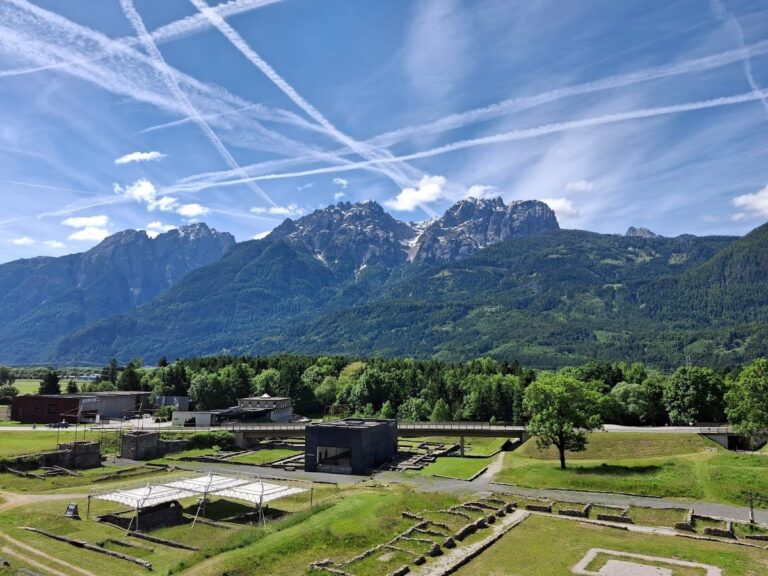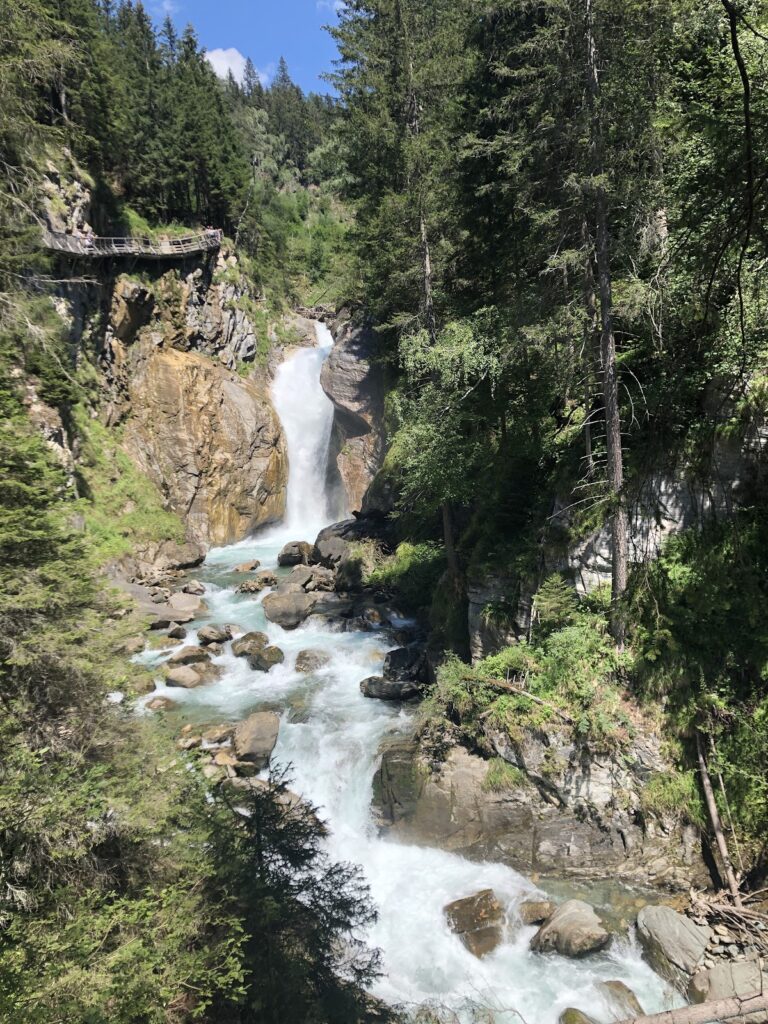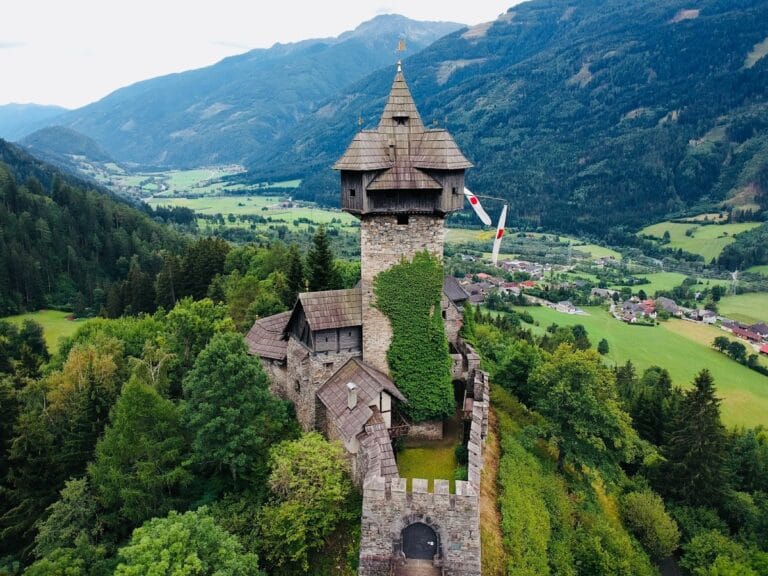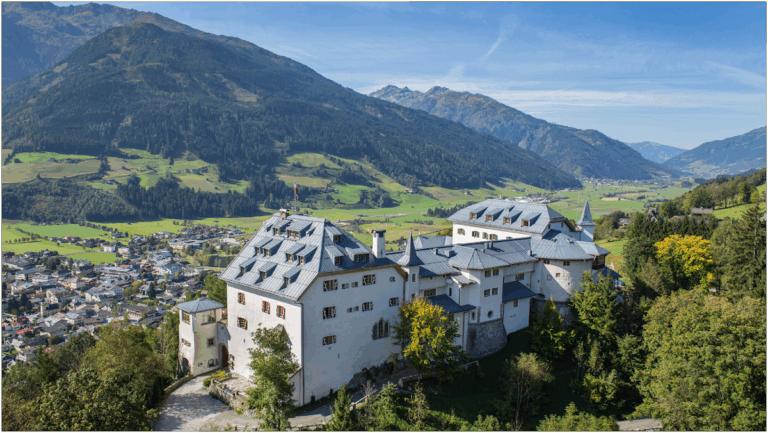Schloss Bruck: A Medieval Fortress and Museum in Lienz, Austria
Visitor Information
Google Rating: 4.3
Popularity: Medium
Google Maps: View on Google Maps
Official Website: www.museum-schlossbruck.at
Country: Austria
Civilization: Medieval European
Remains: Military
History
Schloss Bruck is a medieval fortress located near the town of Lienz in modern-day Austria. It was erected by the Counts of Gorizia and Gradisca, a noble family that established the castle as their residence in the late 13th century. Construction spanned from 1252 until 1277, after which the castle served as the seat of power for this lineage from around 1278.
The castle remained under the Counts of Gorizia and Gradisca until the death of the last count, Leonhard, in 1500. With no heirs to succeed him, his possessions, including Schloss Bruck, passed to King Maximilian I. Maximilian, who later became the Holy Roman Emperor, incorporated these lands into the County of Tyrol, consolidating his influence in the region.
Shortly after acquiring the estate, Maximilian sold the lordship of Lienz, which included Schloss Bruck, to Baron Michael von Wolkenstein-Rodenegg on August 10, 1501. The Wolkenstein family maintained ownership and residence in the castle for over a century. However, due to the castle’s notably cold climate, brothers Sigmund and Christoph von Wolkenstein-Rodenegg decided to construct a more comfortable living space. Between 1606 and 1608, they built the Liebburg, a new residence located within Lienz, and gradually shifted their primary residence there.
During the late 18th century, Schloss Bruck played a military role when French troops under General Joubert occupied the castle as a barracks from 1796 to 1797. After this period of military use, the castle passed through various hands and served multiple civilian functions over the centuries, including as private property, an inn, a brewery, and the office of a shipping company.
Since June 13, 1943, Schloss Bruck has fulfilled a cultural mission as the home of East Tyrol’s local history museum. The museum showcases a prominent collection of works by Albin Egger-Lienz, a well-known Tyrolean painter, while also hosting various art exhibitions and thematic displays related to regional history.
Archaeological discoveries in the vicinity of the castle, including two copper or bronze axes, have demonstrated that the site has been associated with human activity for approximately three millennia, highlighting its long-standing significance in the area.
Remains
Schloss Bruck is situated on a hill near the Hochstein mountain and is approached via a main gate followed by a stone bridge. This bridge ascends diagonally into the castle’s elongated inner courtyard, establishing a fortified entrance that emphasizes defense and control. The courtyard itself is enclosed by the castle’s walls and buildings, creating a compact and secure stronghold typical of medieval fortifications.
Dominating the southwest side of the courtyard is the bergfried, a six-story main tower standing about 37 meters tall. The bergfried was constructed as a central defensive structure and refuge. Access to its interior is gained by a wooden staircase, allowing movement between floors. On the second floor, a Romanesque double-arched window remains intact, featuring a small central column topped with a bud-shaped capital. This window dates back to the original period of construction, illustrating the castle’s medieval architectural origins. At the top of the bergfried, a viewing gallery encircles the structure, providing panoramic sights of Lienz and the surrounding mountain ranges.
The southeast section of the courtyard houses the castle chapel, a two-story building with a square floor plan and a rounded apse. Its walls are adorned with late Gothic frescoes created by several artists over the 15th and 16th centuries. In the apse, Simon von Taisten painted depictions of the Fourteen Holy Helpers and the Death of Mary around 1495. The vault of the apse contains a fresco of the Mercy Seat from 1452 by Nikolaus Kenntner, while Andrä Peuerweg contributed scenes illustrating the Passion of Christ and the Last Judgment on the south side during the mid-1500s. These richly detailed frescoes highlight the chapel’s religious and artistic significance within the castle.
Other features within the courtyard include a sundial created in 1944 by Rudolf Szyszkowitz, adding a modern element to the historic space. An oriel toilet, known in German as an aborterker (a projecting latrine), is situated within the castle, illustrating aspects of medieval living arrangements and sanitation.
The roof structure of the bergfried has been preserved along with views inside the tower, including the wooden staircase and the viewing platform. Surrounding the castle is a scenic wooded area featuring a small pond near the entrance gate. This green space forms a natural extension of the castle grounds and historically would have provided a tranquil setting close to the fortress walls.










